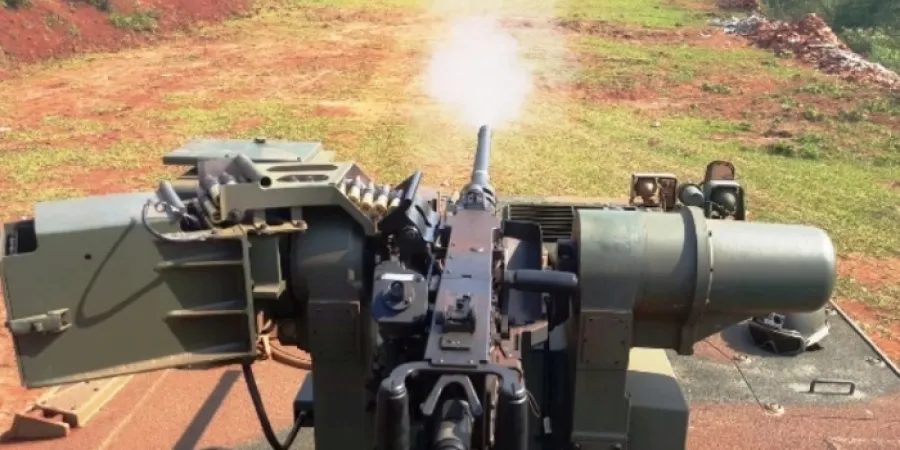Elbit's Brazilian subsidiary ARES developing new remote-controlled weapon station
The REMAX 4 prototype will undergo a series of Brazilian Army tests following completion of development, which is expected by the end of the year
Eyal Boguslavsky
| 31/08/2021
Brazil's ARES, a subsidiary of Israel's Elbit Systems, is completing development of a prototype of its next-generation stabilized remote-controlled weapon station (RCWS) for tracked and wheeled armored vehicles.
The Janes website quoted a senior executive of ARES as saying that the prototype, which will be completed by the year's end, is to be mounted on an Iveco VBTP-MSR Guarani 6x6 armored vehicle, and then tested at the Army Evaluations Center. The RCWS will be proposed for both the Brazilian and overseas markets.
The REMAX 4, in development since late 2019 together with the Brazilian Army Technological Center, is said to be suited for M2HB 12.7 x 99mm and MAG58 7.62 x 51mm machine guns. Featuring automatic target tracking, the new RCWS is about 690mm high and weighs approximately 200 kg, according to the report.
It utilizes a low-profile dual-axis gyro-stabilized weapon mount with weapon cradle, ammunition feeding system, ammunition magazine for 300 12.7 x 99mm or 600 7.62 x 51mm rounds, four 76mm smoke grenade launchers, in-house produced slip ring, ballistic computer, motion control equipment, and a fire-control system bay mounting a gyroscope unit and an OIP EOPTRIS 2.0 electro-optical imager. It also incorporates a day camera, uncooled thermal camera, and eye-safe laser range finder that are independent of the armament bay, Janes said.
The turret is controlled by the internal gunner's Elbit Systems high-definition display, which is coupled to a control handle unit. A commander's high-definition display is available as an option. The turret can be linked to an Elbit Systems E-LAWS 2 laser warning system installed in the hull of the vehicle, according to the report.
The REMAX 4 prototype will undergo a series of Brazilian Army tests following completion of development, which is expected by the end of the year
Brazil's ARES, a subsidiary of Israel's Elbit Systems, is completing development of a prototype of its next-generation stabilized remote-controlled weapon station (RCWS) for tracked and wheeled armored vehicles.
The Janes website quoted a senior executive of ARES as saying that the prototype, which will be completed by the year's end, is to be mounted on an Iveco VBTP-MSR Guarani 6x6 armored vehicle, and then tested at the Army Evaluations Center. The RCWS will be proposed for both the Brazilian and overseas markets.
The REMAX 4, in development since late 2019 together with the Brazilian Army Technological Center, is said to be suited for M2HB 12.7 x 99mm and MAG58 7.62 x 51mm machine guns. Featuring automatic target tracking, the new RCWS is about 690mm high and weighs approximately 200 kg, according to the report.
It utilizes a low-profile dual-axis gyro-stabilized weapon mount with weapon cradle, ammunition feeding system, ammunition magazine for 300 12.7 x 99mm or 600 7.62 x 51mm rounds, four 76mm smoke grenade launchers, in-house produced slip ring, ballistic computer, motion control equipment, and a fire-control system bay mounting a gyroscope unit and an OIP EOPTRIS 2.0 electro-optical imager. It also incorporates a day camera, uncooled thermal camera, and eye-safe laser range finder that are independent of the armament bay, Janes said.
The turret is controlled by the internal gunner's Elbit Systems high-definition display, which is coupled to a control handle unit. A commander's high-definition display is available as an option. The turret can be linked to an Elbit Systems E-LAWS 2 laser warning system installed in the hull of the vehicle, according to the report.



